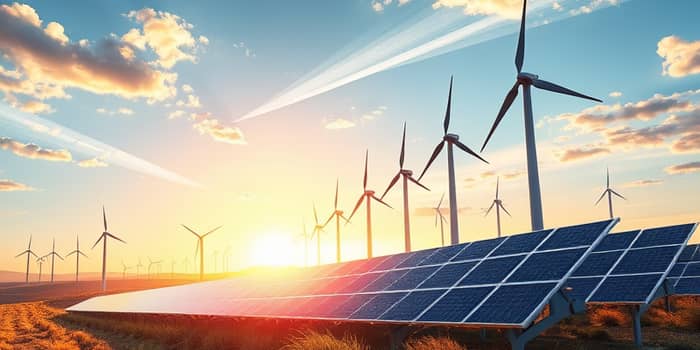
The global energy landscape is witnessing a historic transformation as investments in renewable technologies accelerate at an unprecedented pace. In 2025, overall energy investment is projected to reach a record-breaking $3.3 trillion, with clean energy claiming a dominant share. Solar, wind, nuclear, and efficiency solutions are reshaping markets and outpacing traditional oil, gas, and coal investments by a factor of two.
For the first time ever, funding for electricity generation has surpassed the sums directed into fossil fuel projects. This milestone reflects not only the economic competitiveness of renewables but also a profound shift in policy priorities and corporate strategies aimed at decarbonization and sustainability.
According to the latest data, global energy investment is projected to reach $3.3 trillion in 2025, with approximately $2.2 trillion allocated to clean energy fields. This covers renewables such as solar, wind, hydro, nuclear power, advanced electricity grids, storage solutions, low-emission fuels, and energy efficiency measures. In stark contrast, fossil fuels are estimated to attract only $1.1 trillion, marking a notable decline in their relative share of capital deployment.
The surge in renewable energy investment is underpinned by a convergence of technical, economic, and policy factors. After the COVID-19 pandemic, government stimulus packages and private capital poured into technologies that promise long-term gains rather than short-lived returns on fossil fuel ventures. Concurrently, manufacturing costs for solar modules and wind turbines have plummeted, enhancing project bankability around the world.
China has emerged as the largest investor in global energy, especially in solar PV deployment and grid-scale storage projects. Supported by robust domestic manufacturing and ambitious national renewable targets, the country’s expenditures are a driving force behind overall global growth.
In the United States, the Inflation Reduction Act has triggered record-breaking clean energy supply chain investments. In Q1 2025 alone, the US recorded $9.4 billion in new projects, a 47% year-on-year increase. Battery and solar manufacturing facilities are expanding rapidly, while electric vehicle production capacity is set to reach nearly 7 million units by 2035.
Despite the momentum, renewables face obstacles that could temper future growth. Legacy subsidies for fossil fuels continue to distort markets, granting them an uneven competitive edge. Moreover, infrastructural constraints—such as grid bottlenecks and insufficient storage capacity—can delay project deployment and integration into existing energy systems.
As of 2022, fossil fuels still account for 79% of total energy consumption, and while renewables provided nearly 13% of overall energy use, they amount to approximately 30% of electricity generation. Bridging the gap requires overcoming regulatory hurdles and mobilizing further investment in grid resilience and advanced storage solutions.
Shifting capital toward renewables has significant strategic implications. First, renewables reduce dependence on imports, improving national energy security and insulating economies from geopolitical turbulence. Second, the stable operating costs of solar and wind projects contribute to price stability in electricity markets, alleviating the risk of extreme price spikes.
Technology innovation remains a catalytic factor. Advances in thin-film solar panels, next-generation battery chemistries, and grid optimization tools promise to lower costs and improve performance further. As these technologies mature, they will unlock new opportunities for electrifying transport, heating, and industrial processes.
Global capital is clearly gravitating toward the electricity sector. As stated by Dr. Fatih Birol, IEA Executive Director, “Electricity investments are significantly higher than all fossil fuel investments put together.” This trend is likely to continue as electricity demand grows and decarbonization becomes ever more urgent.
Looking ahead, policy design will play a pivotal role in sustaining momentum. Phasing out fossil fuel subsidies, enhancing grid flexibility, and fostering transparent carbon pricing mechanisms can ensure that investing in clean energy remains attractive and fair. With strong international cooperation and private sector engagement, the transition toward a low-carbon future appears not only feasible but inevitable.
Ultimately, the surge in renewable energy investment symbolizes a collective recognition that clean, affordable, and reliable power is the foundation of a resilient global economy. By continuing to align financial flows with sustainability objectives, the world can secure an energy system that meets our needs today while preserving the planet for generations to come.
References













